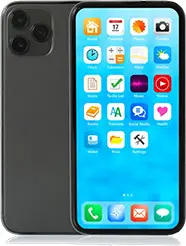Losing your job can be stressful enough on its own. The last thing you want is the additional worry of losing your health care and insurance coverage too. Unfortunately, this is often the harsh reality when you are laid off or switch jobs.
The good news? With a bit of planning and research, you can secure a new affordable health insurance plan, even without employer-based coverage. This 9-step guide will help you navigate how to get health insurance without a job
1. Review Your Current Coverage
First, look at the details of the health insurance you currently have through your employer. When exactly will this coverage lapse?
Knowing your specific coverage end date ensures you can time your new insurance enrollment appropriately. You want no gaps between when your workplace plan stops and new coverage kicks in. Even a gap of a few days can be financially risky and lead to denied claims.
Check with your former employer’s HR department or health insurance company first to confirm when you will lose eligibility for the plan.
2. Consider COBRA Coverage
Under a federal law called COBRA, you can choose to extend your workplace health insurance plan for 18 months in most cases. However, you’ll now pay 100% of the monthly premium yourself without any contribution from your former employer.
On the plus side, sticking with the same insurance you’re used to can provide continuity of care if you have ongoing medical needs or regular prescription medications.
The downside is COBRA is typically quite expensive since you now foot the entire bill. It may be more cost-effective to explore other options like marketplace insurance or plans with subsidies.

3. Check for Qualifying Life Events
Losing workplace health insurance counts as a “qualifying life event” that makes you eligible for a special enrollment period (SEP) to buy a new plan. Having a baby, getting married, or moving to a new area with a different plan or other health insurance options are other examples of qualifying events for a SEP.
This period gives you up to 60 days before or after your workplace coverage ends to enroll in another marketplace health insurance policy without waiting for open enrollment.
4. Browse Health Plans on the Marketplace
Thanks to the Affordable Care Act, you can shop for comprehensive health insurance policies on your state’s ACA marketplace. Every state has its own health insurance marketplace or platform where you can compare plans from various insurers side-by-side to find the best fit.
Marketplace open enrollment happens once a year, usually from November to December. But losing job-based coverage makes you eligible to buy a marketplace plan anytime. Browse all available policies and weigh factors like monthly premiums, deductibles, doctor networks, and prescription drug coverage.
Pay attention to out-of-pocket maximums, which cap your total costs for the year. Plans that limit your financial exposure may be preferable if you expect significant medical spending.
5. Reduce Health Insurance Costs – Seek Out Financial Assistance
One upside of losing workplace insurance is that you may now qualify for financial help to pay for an ACA marketplace plan, Medicaid coverage, or CHIP coverage based on your income level.
ACA Subsidies
If your income falls between 150-400% of the Federal Poverty Level, you can get premium tax credits and cost-sharing reductions to lower your marketplace plan expenses. This can reduce your monthly premiums substantially and make marketplace coverage more affordable.
Medicaid
Medicaid provides free or low-cost health insurance based on strict income and asset eligibility rules that vary by state. For example, in 2023, the income limit for a single person is $19,392 per year. Benefits are robust and costs are minimal or zero for those who qualify.
Children’s Health Insurance Program (CHIP)
The Children’s Health Insurance Program (CHIP) offers free or low-priced coverage for children in families earning too much for Medicaid but too little to afford private health insurance cost well. If you have kids, see if they may be eligible for CHIP after losing a job.

6. Explore Alternate Health Insurance Options
Along with marketplace plans and public programs, also research other marketplace health insurance plans and alternatives like:
Short-term Health Insurance plans – These are non-ACA compliant private health insurance policies designed to fill brief coverage gaps. Drawbacks are limited benefits, pre-existing condition exclusions, and renewals may be denied.
High-deductible plans – Choosing a bronze-level marketplace plan pairs low premiums with higher out-of-pocket costs. But this can work if you are generally healthy and don’t use medical services often.
Spousal or family coverage – If your spouse has employer coverage, see if you can get on their policy. If you are under 26 or have kids under 26, check if you can join a parent’s or job-based health insurance plan.
7. Get Guidance from Insurance Agents
Health insurance details can be confusing. Working with an independent insurance agent or navigator simplifies the process. These experts help you:
- Determine eligibility for subsidies or public programs
- Identify optimal plans based on your needs and budget
- Answer questions and walk you through required paperwork
- Avoid mistakes that could negatively impact coverage
Connect with a licensed agent in your state for hassle-free enrollment.
8. Act Promptly to Obtain New Coverage
Once you’ve compared plans and determined the best option, promptly submit your application and any required documentation. Pay your first premium to activate your comprehensive coverage, without any gap.
If buying a marketplace plan, provide proof of income, citizenship status, and other details to verify eligibility. You want your new health insurance to kick in effective on the exact date you lose your prior coverage.
Don’t delay enrollment and risk going uninsured. A health crisis without insurance could be financially devastating.

9. Review Changes During Open Enrollment
Open enrollment periods for marketplace plans and Medicare happen annually. At this time, you can change plans, add or drop family members, switch between health insurance companies again, and access new plan options.
Review your coverage choices and premiums during each next open enrollment period to ensure your health insurance still aligns with your healthcare needs and budget.
Extra Tip: Savings for Medicaid Recipients
If you qualify for Medicaid, you also likely meet eligibility requirements for valuable Lifeline and Affordable Connectivity Program (ACP) benefits. These programs provide discounted or free monthly cell phone service and internet access.
EASY Wireless offers qualifying Medicaid recipients FREE Monthly Talk, Text, and Data. By applying for Lifeline and ACP through EASY Wireless, you can eliminate your cell phone bill and save an average of $600 per year on cell phone and data costs.
That’s $600 you could potentially put toward paying for health insurance coverage or other important expenses. Maintaining phone service is also essential when job hunting.
Be sure to check your eligibility and apply for Lifeline and ACP if you qualify through Medicaid enrollment or by your income level. The extra savings on cell phone bills can really add up.
Find the Health Coverage You Need
Staying insured provides crucial financial protection and peace of mind. Don’t let unemployment threaten your healthcare. Follow this guide, act quickly if you lose job-based coverage, and secure new affordable insurance tailored to your situation.


